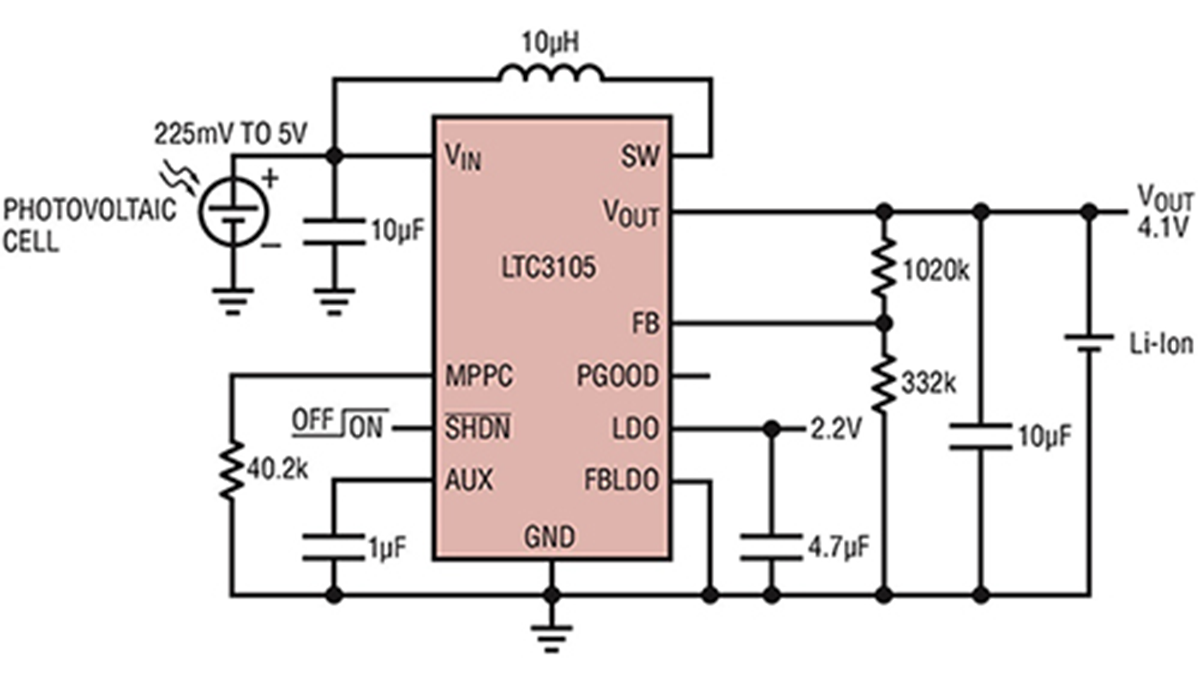Indoor lighting offers a convenient energy source for many applications but lacks the high-power levels of solar energy. In fact, indoor lighting energy-harvesting systems face a number of challenges that differ subtlety from those encountered in solar-energy harvesting. Nevertheless, engineers can quickly implement energy-harvesting designs using a variety of components and specialized devices from manufacturers including Cymbet, IXYS, Linear Technology, Panasonic, STMicroelectronics, and Texas Instruments, among others.

While solar energy can reach levels sufficient to power entire buildings and small towns, indoor lighting presents markedly different characteristics. As a result of the human eye’s remarkable ability to adjust to a very wide range of illumination levels, people will often perceive relatively little difference in illumination between a cloudy sky and a brightly lit room, for example. Yet, the level of harvestable energy is dramatically different between the two. In fact, power density available with even the best indoor lighting is substantially below that of solar energy and can differ by several orders of magnitude (Figure 1).
PV differences
These differences translate directly into energy-harvesting output. A solar cell optimized for sunlight can generate about 40 mW per square inch in full direct sunlight. In contrast, even a large high-efficiency crystalline cell will generate less than a milliwatt from typical office lighting sources.
At the same time, the spectral sensitivity of photovoltaic (PV) cells used for outdoor and indoor energy harvesting differs in line with the nature of their respective sources. Typical solar cells used in outdoor applications have a spectral sensitivity range of 500 nm to 1100 nm.
For More Details: Specialized ICs, PV Cells Enable Energy Harvesting from Indoor Lighting
